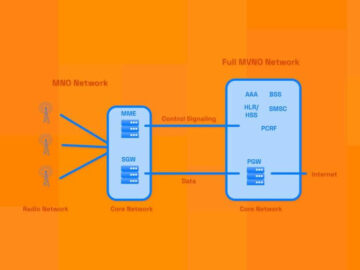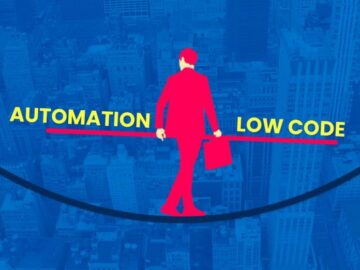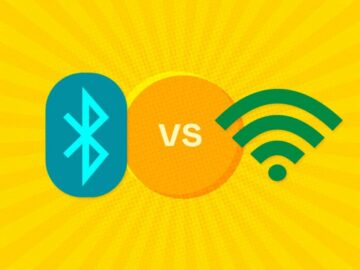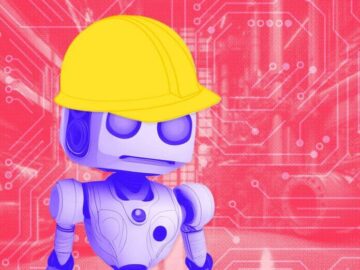
Farmers face more pressure than ever before. Demand for food is growing as the population increases, and land is taken as urbanization spreads. Moving forward, agricultural enterprises need to operate in new and adapted ways in order to survive. Emerging technology, falling under the banner of Smart Farming, offers today’s farmers that possibility as farmers face unprecedented challenges when trying to pass the agricultural way of life to future generations. As a result, farmers’ profits are dwindling. Local farms, including some in the world’s most fertile lands, are on the decline. Consequently, building a viable business has become more challenging, and the farmers need to find ways to work smarter and not just harder.
Historically, agricultural facilities invested immense amounts of time, money, and effort in ordering, unloading, storing, planting, monitoring, cultivating, and ultimately harvesting crops. New smart farming technologies can offer new ways to streamline the workflow, improve operations, and by doing so, create more robust businesses.
“New smart farming technologies can offer new ways to streamline the workflow, improve operations, and by doing so, create more robust businesses.”
-Wittra
IoT’s Bright Agricultural Future
The Internet of Things (IoT) is the linchpin in this transformation. Intelligent sensors are placed throughout a farm, acting as the farmer’s eyes and ears, collecting information on crop and equipment performance. One of the most valuable features of IoT technology is its ability to extend visibility to new endpoints. Empowered with real-time monitoring and analytics systems, farmers gain more insight into their operations, and the ability to manage them more effectively. Here are some of the ways that smart farming improves agricultural enterprises and will continue to do so in the future:
#1: Monitoring Crop Growth
IoT in the agriculture industry helps farmers improve the quality of the crops and the fertility of the land. Sensors collect nutrient density information, so farmers can adjust the amount of fertilizer used. If signs of infestation arise, regulating pesticides can be used to eliminate the invasion. In essence, data-driven agriculture empowers farms. Information received allows for the adjustment of activities reflecting the current conditions, manages the crop cycle more easily, gains efficiency, and enhances crop growth.
#2: Improving Greenhouse Operations
Greenhouse IoT sensors not only improve visibility but also automate traditional manual functions, thus making the entire process more efficient and more automated. They collect and transmit real-time data, such as air pressure, humidity, temperature, light levels, and soil conditions. Even water consumption can be monitored with email or SMS alerts if any shortcomings arise. In advanced systems, adjustments can occur automatically. The processes become more cost-effective, accuracy increases, and operational performance improves.
#3: Tracking Water Use
Agricultural IoT helps farmers monitor water tank levels in real-time, by tracking how much water is being used, and how much is left. Smartphones deliver intuitive reports that outline trends, and in some cases even make recommendations. The farmers can adjust water usage as needed so the irrigation process becomes more efficient and more economical.
Predictive Equipment Maintenance
Through IoT, farmers can monitor their land, vehicles, and other assets. Because the equipment is vital to daily operations, farmers want to minimize downtime. This provides a view of device performance, which updates as the equipment operates. Advanced data analytics supplies them with needed management insights. Artificial intelligence and machine learning gauge an asset’s typical efficiency and wear and tear based on metrics, like vibration analysis, oil analysis, and thermal imaging. Predictive maintenance models rely on complex algorithms to identify when an asset will need to be serviced, repaired, or retired. These insights come before – rather than during or after – the devices stop performing, keeping the farms’ operations flowing without any hiccups. The benefits include lengthened machinery lifecycles, lowered downtime, and more productive employees.
Smart Livestock Management
A great deal of time, effort, and money goes into livestock monitoring. Traditionally, individuals manually inspected animals and looked for signs of disease or injury. The process was costly, highly unreliable, and inefficient. IoT solutions remove any speculation when determining an animal’s health by monitoring temperature, blood pressure, heart rate, etc. The information is wirelessly sent to an application in near real-time. Farmers can then access the following information via mobile devices:
- The health and location of each animal in their herds can be checked from anywhere.
- Information about the peak of mating season can be determined.
- Alerts are received if a metric falls outside of the normal range.
- Preferred grazing spots can easily be recognized.
Benefits to Agriculture and Personalized Services
By adopting smart farming technology, farmers are empowered to develop more personalized approaches, and this ability changes the relationship between consumers and retailers. The farmers can focus on consumers who are interested in sustainability and eco-friendly food, while the focus is kept on creating new strands of their products. They can then charge a premium for their goods, grow revenue, and create a stronger business.
Smart sensors automatically monitor every aspect of everyday agricultural work. The technology enables farmers to automate real-time data collection, increase production volumes, reduce costs, lower waste, and much more, allowing for an increase in productivity. These many benefits are convincing farmers to invest in the technology. In fact, a worldwide smart farming review showed spend is expected to increase from $3.715 billion in 2022 to $7.040 billion in 2026, a CAGR of 13.65 percent. By then, farmers will have deployed hundreds of millions of IoT sensors for the improvement of their everyday operations.
Driving Efficiency
Smart farming technology offers businesses new ways to drive agricultural efficiency, and by doing so also reduces costs, and increases revenue. In other words, smart farming technology is most significant for the development of modern farming and will keep agricultural industries viable in the future.
- SEO Powered Content & PR Distribution. Get Amplified Today.
- Platoblockchain. Web3 Metaverse Intelligence. Knowledge Amplified. Access Here.
- Source: https://www.iotforall.com/is-smart-farming-the-future-of-agriculture
- $3
- 1
- 2022
- 9
- a
- ability
- About
- access
- accuracy
- activities
- adapted
- Adjustment
- adjustments
- Adopting
- advanced
- After
- Agricultural
- agriculture
- AIR
- algorithms
- Allowing
- allows
- amount
- amounts
- analysis
- analytics
- and
- animal
- animals
- anywhere
- Application
- approaches
- artificial
- artificial intelligence
- Artificial Intelligence and Machine Learning
- aspect
- asset
- Assets
- automate
- Automated
- automatically
- banner
- based
- because
- become
- becomes
- before
- being
- benefits
- between
- Billion
- blood
- Blood Pressure
- Bright
- Building
- business
- businesses
- CAGR
- cases
- challenges
- challenging
- Changes
- charge
- collect
- Collecting
- collection
- come
- complex
- conditions
- Consequently
- Consumers
- consumption
- continue
- cost-effective
- Costs
- create
- Creating
- crop
- crops
- Current
- cycle
- daily
- data
- Data Analytics
- data-driven
- deal
- Decline
- deliver
- Demand
- density
- deployed
- determined
- determining
- develop
- Development
- device
- Devices
- Disease
- doing
- downtime
- drive
- during
- each
- easily
- effectively
- efficiency
- efficient
- effort
- eliminate
- emerging
- Emerging Technology
- employees
- empowered
- empowers
- enables
- Enhances
- enterprises
- Entire
- equipment
- essence
- etc
- Ether (ETH)
- Even
- EVER
- Every
- everyday
- extend
- Eyes
- Face
- facilities
- Falling
- Falls
- farm
- farmers
- farming
- Farms
- Features
- Find
- Flowing
- Focus
- following
- food
- Forward
- from
- functions
- future
- Gain
- Gains
- generations
- Goes
- goods
- great
- Grow
- Growing
- Growth
- Harvesting
- Health
- Heart
- helps
- here
- highly
- How
- HTTPS
- Hundreds
- hundreds of millions
- identify
- Imaging
- immense
- improve
- improvement
- improves
- improving
- in
- In other
- include
- Including
- Increase
- Increases
- individuals
- industries
- industry
- inefficient
- information
- insight
- insights
- Intelligence
- Intelligent
- interested
- Internet
- internet of things
- intuitive
- invasion
- Invest
- invested
- iot
- Keep
- keeping
- Land
- lands
- learning
- levels
- Life
- lifecycles
- light
- local
- location
- looked
- machine
- machine learning
- machinery
- maintenance
- make
- Making
- manage
- management
- manages
- manual
- manually
- many
- max-width
- metric
- Metrics
- millions
- minimize
- Mobile
- mobile devices
- Modern
- money
- Monitor
- monitored
- monitoring
- more
- more efficient
- most
- moving
- Near
- Need
- needed
- New
- normal
- offer
- Offers
- Oil
- ONE
- operate
- operates
- operational
- Operations
- order
- Other
- outline
- outside
- Peak
- percent
- performance
- performing
- Personalized
- Planting
- plato
- Plato Data Intelligence
- PlatoData
- population
- possibility
- Premium
- pressure
- process
- processes
- Production
- productive
- productivity
- Products
- profits
- provides
- quality
- range
- Rate
- real-time
- real-time data
- received
- recognized
- recommendations
- reduce
- reduces
- relationship
- rely
- remove
- Reports
- result
- retailers
- revenue
- review
- robust
- Season
- sensors
- significant
- Signs
- smart
- smarter
- smartphones
- SMS
- So
- Solutions
- some
- speculation
- spend
- Spreads
- Stop
- Strands
- streamline
- stronger
- such
- survive
- Sustainability
- Systems
- tank
- Technologies
- Technology
- The
- The Future
- the information
- their
- thermal
- things
- throughout
- time
- to
- today’s
- Tracking
- traditional
- traditionally
- Transformation
- transmit
- Trends
- typical
- Ultimately
- under
- unprecedented
- Updates
- Usage
- Valuable
- Vehicles
- via
- viable
- View
- visibility
- vital
- volumes
- Waste
- Water
- ways
- which
- while
- WHO
- will
- without
- words
- Work
- workflow
- world’s
- worldwide
- zephyrnet









